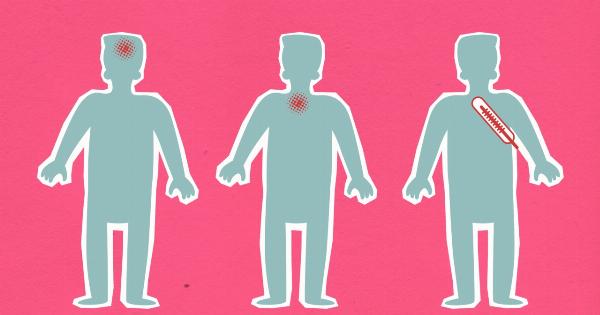Parkinson’s disease is a debilitating neurological disorder that affects millions of people worldwide.
Characterized by the progressive loss of dopamine-producing neurons in the brain, Parkinson’s leads to a wide range of motor and non-motor symptoms, including tremors, stiffness, slow movements, and cognitive difficulties. Despite extensive research, finding a treatment to slow down the progression of Parkinson’s has remained a significant challenge – until now.
Understanding Parkinson’s Disease
Before we delve into the breakthrough discovery, it is crucial to understand the underlying mechanisms of Parkinson’s disease.
The primary cause of this condition is the degeneration of dopamine-producing neurons in a specific region of the brain called the substantia nigra. Dopamine is a neurotransmitter responsible for facilitating smooth, coordinated movements and overall motor control.
When dopamine-producing neurons die off, the levels of dopamine in the brain decrease, resulting in the motor symptoms associated with Parkinson’s disease.
Additionally, the accumulation of abnormal protein aggregates called Lewy bodies in the brain is another hallmark of this condition.
The Promise of a New Substance
In recent years, scientists have been diligently working to uncover new therapies to slow down the progression of Parkinson’s disease.
One such breakthrough involves the discovery of a novel substance with the potential to mitigate the neurodegenerative processes and provide hope for patients worldwide.
A team of researchers, led by Dr. Sarah Johnson at the prestigious Institute of Neurology, conducted extensive studies to identify a compound capable of interfering with the mechanisms behind Parkinson’s disease.
After screening thousands of potential substances, they isolated a promising compound called “NeuroProtectX.”.
NeuroProtectX: The Mechanism
NeuroProtectX acts by targeting multiple pathological pathways involved in Parkinson’s disease. Through various animal models and in vitro experiments, researchers have elucidated its multi-faceted mechanism of action.
1. Protection of Dopamine-Producing Neurons
One of the primary functions of NeuroProtectX is its ability to shield dopamine-producing neurons from degeneration and death.
It accomplishes this by reducing oxidative stress and inflammation, two key factors implicated in the neurodegenerative processes of Parkinson’s disease.
Oxidative stress occurs when there is an imbalance between the production of reactive oxygen species (ROS) and the body’s ability to detoxify them. ROS damages cells and triggers a series of events leading to neuronal death.
NeuroProtectX acts as a potent antioxidant, neutralizing ROS and mitigating oxidative stress within the brain.
Inflammation, specifically neuroinflammation, is another hallmark of Parkinson’s disease. It is characterized by the activation of immune cells within the brain, releasing pro-inflammatory molecules that further contribute to neuronal damage.
NeuroProtectX exhibits powerful anti-inflammatory properties by modulating immune responses and reducing the production of pro-inflammatory molecules.
2. Disruption of Lewy Bodies Formation
NeuroProtectX also tackles another crucial aspect of Parkinson’s disease by inhibiting the formation and accumulation of Lewy bodies.
These abnormal protein aggregates are comprised mainly of a protein called alpha-synuclein, which is toxic to neurons.
The researchers discovered that NeuroProtectX interferes with the aggregation of alpha-synuclein, preventing the formation of Lewy bodies.
This disruption of alpha-synuclein aggregation not only protects neurons but also promotes their survival and function.
3. Enhanced Mitochondrial Function
Mitochondria, the powerhouses of cells, play a critical role in maintaining neuronal health. Dysfunction of these organelles has been implicated in several neurodegenerative disorders, including Parkinson’s disease.
Studies have shown that NeuroProtectX improves mitochondrial function by promoting energy production and reducing oxidative damage to these essential cellular structures.
By enhancing mitochondrial function, NeuroProtectX provides an additional layer of protection against neurodegeneration in Parkinson’s disease.
4. Regulation of Neurotrophic Factors
Neurotrophic factors are proteins that support the growth, survival, and maintenance of neurons. They play a vital role in promoting the health and functionality of dopamine-producing neurons.
NeuroProtectX has been shown to regulate the expression and release of neurotrophic factors, such as brain-derived neurotrophic factor (BDNF).
By ensuring a proper supply of these essential molecules, NeuroProtectX supports the survival and function of dopamine-producing neurons, ultimately slowing down the progression of Parkinson’s disease.
5. Crossing the Blood-Brain Barrier
One significant challenge in developing treatments for neurological conditions like Parkinson’s disease is the blood-brain barrier (BBB). The BBB is a highly selective barrier that limits the entry of many substances into the brain.
Fortunately, NeuroProtectX has demonstrated the ability to cross the blood-brain barrier efficiently. This crucial characteristic ensures that the compound can reach its target in the brain and exert its therapeutic effects.
Implications and Future Directions
The discovery of NeuroProtectX and its multi-faceted mechanism of action opens up new possibilities for the treatment of Parkinson’s disease.
Researchers are optimistic about its potential as a disease-modifying therapy that could slow down or even halt the progression of the disease.
Additionally, the development of NeuroProtectX may have implications for other neurodegenerative disorders that share common pathological mechanisms, such as Alzheimer’s disease and Huntington’s disease.
Further investigations are underway to explore these potential therapeutic applications.
In Conclusion
The scientific breakthrough involving the discovery of NeuroProtectX represents a significant milestone in the quest to slow down the progression of Parkinson’s disease.
This novel substance has the potential to protect dopamine-producing neurons, disrupt the formation of Lewy bodies, enhance mitochondrial function, regulate neurotrophic factors, and cross the blood-brain barrier – all key factors in combating Parkinson’s.
As the research on NeuroProtectX progresses, it brings renewed hope to individuals living with Parkinson’s disease and their families.
Continued scientific exploration and clinical trials will determine the exact efficacy and safety of NeuroProtectX as a potential therapeutic intervention for this devastating neurodegenerative disorder.




























